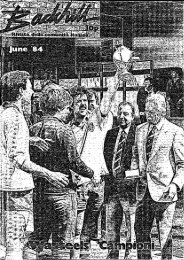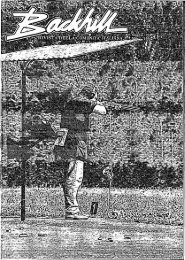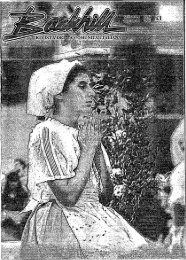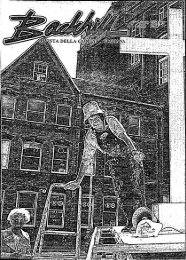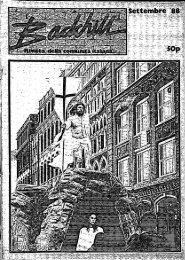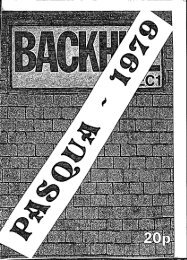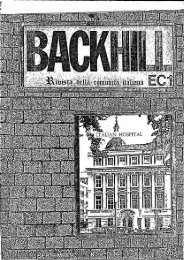P - Backhillonline
P - Backhillonline
P - Backhillonline
You also want an ePaper? Increase the reach of your titles
YUMPU automatically turns print PDFs into web optimized ePapers that Google loves.
Strad's Secret<br />
$~-'<br />
RIVISrA DEl.LA COMUNlTA'ITALIANA<br />
ju/iafl Brown<br />
I<br />
Ii,,<br />
,i I<br />
Antonio Stradivari was bOrn in<br />
1644, into a respected family of<br />
craftsmen in Cremona, a northern<br />
Italian town that was already famed<br />
far afield for its violins. .<br />
Stradivari was apprenticed to' the<br />
instrument maker Nicolo Arnati at<br />
aroUnd the age of 12 and by the time,<br />
he'died, aged 93, he had made around<br />
a. thousand .violins and at 'leaSt 300.<br />
oilier stringed instruments, including<br />
,cellos, lutes and guitars. .<br />
A productive life, certainly, and a<br />
reasonably well-rewarded one: he sOld<br />
most of his output for the equivalent<br />
of around four pounds each, ,and<br />
apjX:arcd WeIr satisfied with the mOd~<br />
erate, middle-class income and lifestyle<br />
his craft brought him and his<br />
family. Stradivari' conld never have<br />
dreamt that; 250 years after ,his death,<br />
his violins are auctioned<br />
and reach<br />
prices anywhere<br />
from £200,000 to<br />
several million.<br />
What makes a<br />
Sti'adivaiius violin<br />
(he usually signed<br />
his work with the<br />
Latin version of<br />
his name and was<br />
careful to ensure,<br />
during his lifetime;<br />
that no instrument<br />
except those made<br />
completely by his<br />
own hand bore his<br />
label) so valuable and so special?<br />
I had a rare chance to find out for<br />
myself when a 'Strad' came up for<br />
auction at Sotheby's. As a keen<br />
amateur violinist, I had always wondered<br />
whether sueh an instrument<br />
would make a dramatic difference to<br />
my playing, so although the guide<br />
price of £300,000 was beyond my<br />
means, I went along to IIy it out.<br />
The Strad, its centuries-old varnish<br />
gleaming with a deep, red bloom, lay<br />
waiting in an anteroom. I picked up<br />
the instrument, tuned it and played.<br />
The effect was electrifyingl The violin<br />
resonated and sang out in a way<br />
that I had never experienced before. It<br />
was like driving a high performance<br />
racing car after a clapped-out Mini -<br />
pure exhilaration I<br />
But driving high performance cars<br />
requires great skill. And the same<br />
applies to Strads. A Strad won't<br />
suddenly turn you into a virtuoso.<br />
Still, for a few 'brief moments, I<br />
glimpsed it's magical properties.<br />
During his career Stradivari made<br />
certain subtle changes in the proportions<br />
of the violin, gradually increasing<br />
the instrument's power. While his<br />
early work followed the traditions of<br />
his ,teacher Arnati, by the close of the_<br />
:17'h century the Stradivarius had become<br />
. flatter and· broader, and the<br />
bridge began to look'as it does today.<br />
'Probably the greatest of the Strad<br />
known as the 'Soil' of 1714,' says<br />
Peter Biddulph a London violin dealer,<br />
who had sold a number of Strads.<br />
'Many people think this is the finestsoUnding<br />
violin in the World an(\ it's<br />
appropriate that it's played by the<br />
Israeli Itzhak Perlman, probably the<br />
greatest living violinist'. .<br />
But violin makers have long copied<br />
the proportions of<br />
Stradivarius's instruments<br />
- without achieving<br />
the Same results. So<br />
the secret must lie elsewhere.<br />
But where?' In the<br />
deep, lustrous auburnred<br />
varnish, according to<br />
one theol}'. But there's a<br />
problem. Strads have<br />
withstood nearly 300<br />
years of wear and tear.<br />
Not surprisingly, the rich<br />
varnish on many has<br />
taken a battering and, in<br />
some cases, most of it<br />
has been worn away. Yet these instruments<br />
still sound magnificent.<br />
In the 1980s, a US researcher<br />
ciin1e up with a new theol}': the secret<br />
lay in the wood. Stradivari used wood<br />
- maple and spruce - that was delivered<br />
to Cremona by being floated<br />
along the Italian canals; perhaps the<br />
contact with water had changed its<br />
character. The idea was initially supported<br />
by electron microscope pictures<br />
of the violin's surface: Strad<br />
wood was found to be riddled with<br />
tiny, open pores, while those of<br />
modem instruments were closed.<br />
But later research suggested that<br />
whether the pores showed as open or<br />
closed under examination was not<br />
dependent on the violin' but on how<br />
the wood sample had been cut and<br />
prepared before examination.<br />
Electron microscopy, however,<br />
may yet provide the answer. Recent<br />
research in Cambridge has found a<br />
layer beneath the Strad's famed varnish.<br />
Under the electron microscope it<br />
appears like a: seam of manipan<br />
sandwiched between the cake of wood<br />
and the icing-like varnish.<br />
This turns out to be consistent<br />
with another idea put Jor;ward in the<br />
1980s. For some time experts had<br />
been arguing over whether the craftsmen.<br />
of Cremona had used a wood<br />
sealant before applying varnish to the<br />
instruments they were making.<br />
John Chipura, an American geolo<br />
,gist and violin enthusiast, published a<br />
letter in the magazine The Slrad<br />
suggesting that this sealant may well<br />
'have been a'layerof'Roinan cement.<br />
Readily available, the cement was the<br />
Italian 'Polyfilla' of its time and was<br />
made from local volcanic ash, whose<br />
mineral constituentS are vel}' similar<br />
to those revealed by Barl




